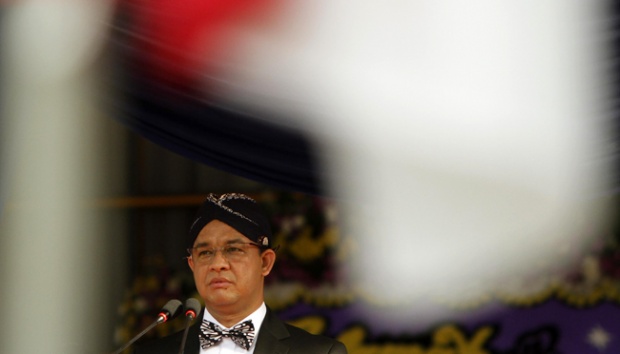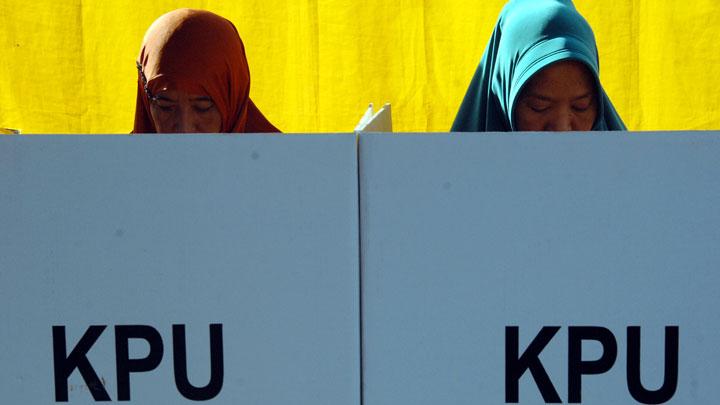Making Employability Work: Indonesia`s Experience
Translator
Editor
Kamis, 1 Januari 1970 07:00 WIB

TEMPO.CO, Jakarta - The spread and spirit of democracy has encouraged people from diverse backgrounds to engage in a harmonious dialogue on a wide range of issues. The Asia-Europe Meeting (ASEM) has undertaken an important role in bringing countries from Asia and Europe together to discuss essential matters, including those in the education area.
Since the 1st ASEM Meeting of Ministers for Education (ASEM ME1) held in Berlin, Germany, in 2008, significant progress has been made to address educational issues of the 21st century that particularly fall under four priorities: 1) Quality Assurance and Recognition, 2) Engaging Business and Industry in Education, 3) Balanced Mobility, and 4) Lifelong Learning including Technical Vocational Education and Training.
Throughout the ASEM Education Process, we have emphasised human and skill development for better employability. Different countries face different challenges in improving employability. Indonesia in particular faces enormous challenges due to the vast number of youths. This article aims to share Indonesia’s experience and best practices in improving employability.
In 2012, the United Nations Development Programme (UNDP) released a study revealing that more than 60% of the world population is in Asia, whilst population in Europe accounts for 10% of the world’s total population. The number of workingage population in Asia is projected to increase by 22% from 2.8 billion in 2010 to 3.4 billion in 2050 (Yidan Wang, World Bank, 2012).
On the other hand, Europe’s population rate is projected to decrease by 23% from 0.5 billion to 0.38 billion during the same period. An increased population generates increased demand and consumption for goods and services, which in turn results in a rising demand for workers. In this regard, the opportunity to fill the demand for skilful workers is open to any region or country with the most working-age population, including Indonesia.
Indonesia has the world’s fourth largest population and its economy could become the seventh largest economy in the world by 2030 (McKinsey, 2013). To support the economy Indonesia will require 113 million skilled workers. This number could easily be fulfilled since the number of working age population in 2014 reached approximately 120 million (Statistics Indonesia, 2016).
However, the majority of the workers have not yet acquired the desired level of skills. This situation needs to change. In trying to achieve greater productivity, there has been a steady increase in demand for skilled and highskilled workers and a decrease in demand for unskilled and lowskilled workers. Those with lower levels of education are more likely to be unemployed whilst those with higher levels of education are more likely to be employed.
The message is clear. The urgency and necessity to devise a comprehensive policy to improve the employability of the working age population through increased education and skills is obvious. According to the Pearson Learning Curve (2014), developing countries must teach effective basic skills such as mathematics and literacy before embarking on more advanced skills (National Medium Term Development Plan 2015-2019, p. xix).
Against this background, a strong focus on the quality of basic education is still required and the priority for the next five years must be directed towards the improvement of students’ achievement, vocational and technical skills as well as higher education. The direction of education development in 2015-2019 covers rather ambitious but feasible targets as follow:
• Average years of schooling of the population aged over 15 years: 8.8 years
• Average literacy rate of the population aged 15 years and over: 96.1%
• Percentage of primary education accredited B or higher: 84.2%
• Percentage of junior secondary accredited B or higher: 81.6%
• Percentage of senior secondary accredited B or higher: 84.6%
• Percentage of skill competence of senior vocational accredited B or higher: 65%
• Gross Enrolment Ratio of junior secondary between 20% poorest and 20% richest population: 0.90
• Gross Enrolment Ratio of senior secondary including vocational between 20% poorest and 20% richest population: 0.60
To date, the Government of Indonesia has pledged solid commitment to the development of the education sector. For over a decade, the government has been consistently increasing education investment and reform at all levels. Government expenditure in education has tripled, resulting in the expansion of education access, particularly for the marginalised. Statistics clearly show that gross enrolment ratios of secondary and tertiary education have increased exponentially.
More initiatives have been launched to support the achievement of education targets, particularly employment oriented education. First, the Universal Secondary Education program increases the compulsory period of study for schoolaged children from 9 years to 12 years. Second, Technical and Vocational Education and Training (TVET) and lifelong learning covers the adjustment of education and employment. TVET is conducted by accelerating the development of vocational schools. Community Colleges and Polytechnics are designed to meet the local needs and national priorities, based on the Master Plan of Acceleration and Extension of Indonesia’s Economic Development (MPAEIED) program. Further to that, in order to ensure better employment, a comprehensive adjustment in quantity, quality, location, and time, the Indonesian Qualification Framework (IQF) has been established to improve the quality. Third, establishing community colleges in each district to support the expansion of quality education in the province is mandated by Law No.22/2012 on Higher Education. Indonesia is close to achieving the target gross enrolment ratio of tertiary education of 30% or approximately 5 million of the students enrolled.
The dialogue on education with ASEM has been showing positive progress. Indonesia reiterates its strong commitment by supporting initiatives, sharing best practices and lessons learned on the development of education in Asian and European countries.
To achieve the goals of the ASEM Education Process on better employability, ASEM needs to focus on the development and nurturing of the quality of education systems. Such aspects are addressed in our first priority in the ASEM Education Process, namely, Quality Assurance and Recognition. Several activities under this topic are carried out, including: a) Working Group on Mobility of Higher Education and Ensuring Quality Assurance of Higher Education among ASEAN plus Three Countries and b) Working Group Meeting for Implementing the ASEM Recognition Bridging Declaration. The quality enhancement in our education system is clearly needed at all levels. With the increase of quality, students are able to achieve better learning outcomes and acquire better knowledge.
Under the second priority, ASEM members construct collaboration between business and industry sectors and the educational system. This collaboration successfully stimulates members to jointly establish several activities such as the “ASEM Work Placement Pilot Programme” which allows students from Asia and Europe to experience the international working environment, and the “ASEM Rectors Conference and Students Forum” that provides a platform for rectors and students to discuss the relationship between higher education institutions and business.
The third priority emphasises balanced mobility, where ASEM members pay close attention to the trend of exchange of students and staff among countries in both regions. This is one common obstacle that we are currently facing. The imbalance between numbers of student and staff of Asia and those of Europe will prevent the involved actors to gain the necessary international experience and training to boost their employability.
In this regard, ASEM members are continually encouraged to extend their commitment to work together in several ASEM education activities such as “ASEM Joint Curriculum Development Project” (which allows students from Asia and Europe to experience different learning cultures and absorb best practices from different countries); “Asia-Europe Institute (AEI) – ASEM Summer Camps (AEI-ASC)” and “ASEF Summer University” which provide students and staff with international experiences.
Through the fourth pillar, ASEM members are promoting lifelong learning opportunities. Lifelong learning will provide the means to develop skills and working life capabilities. Activities under this pillar include the ‘Working Group on Innovative Competences and Entrepreneurship Education’ which allows the members to share their best practices, and analyse and evaluate innovation and entrepreneurship education.
Within the framework of ASEM cooperation, I believe that we will overcome our common obstacles by supporting one another. ASEM consists of 53 partners that have different education systems, and experience different policy and education achievements. The opportunity the forum has to offer is enormous. We can learn from each other’s experiences and best practices to reach a common universal goal which is to develop human capital for the advancement of each country. We have set our future plan. The next step is to start executing the plan and agenda to enrich the contribution of education to the society at large and to people-to-people contact, particularly between Asia and Europe.
By Anies BASWEDAN, Minister of Education and Culture, Republic of Indonesia




















